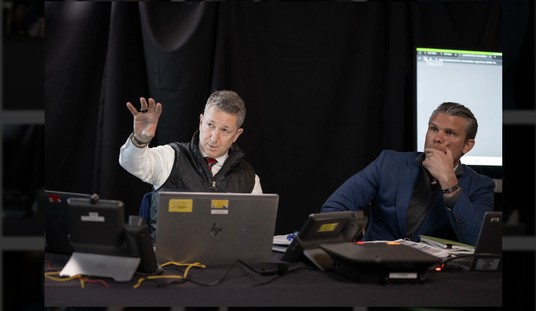I asked my Twitter followers for their favorite childhood Halloween memories and all of them were the essence of innocent pleasure: mushing pumpkin pulp between their fingers, swapping candy with siblings, and my favorite contribution: “My dad came home with the original light sabers the first year they were out as a surprise.”

Tim Burton understands the childhood attraction to the macabre. He made a kid's musical about a corpse.
As little children, we believed in vampires, werewolves and ghosts. As adolescents, we pretended to believe. As adults, we grasp at the memories of how it felt to believe. And one of the most characteristic delights of childhood Halloween is the glee at being terrified by the unreal, and believing in ghosts.
I remember the years when I slept every night with the sheets pulled tight around my neck because of a Goosebumps book I’d read about vampires; but now the nighttime fear that haunts me most is of leaving the front door unlocked. These days I’m a sad Sherlock Holmes, discovering that behind every mystery are the same old human vices.
Maybe that’s why, as an adult, I reach for bone-chilling literature when I want to recapture that childhood feeling. In a uniquely adult way, the best horror writers pry open the neat machinery of the grown-up brain and activate the squirming illogical fears inside. We might not be able to believe in ghosts anymore, but we can believe in fiction. Dracula, Frankenstein, and the works of Edgar Allan Poe are old friends in this season, but below are a few fine works of horror that are less well-known. Each inspires a thrill of terror that opens like a chasm to the bottom of our most universal and mysterious fears.
Next: A Bone-Chilling Tale from an Unlikely Spookster…
3. Henry James, “The Friends of the Friends”
In Henry James’s short story, “The Friends of the Friends,” the narrator introduces two acquaintances to each other, a male and a female, because of their common experience: each has seen the ghost of a loved one. The narrator later becomes engaged to the male friend but fears that her fiancée harbors a more profound connection with her female, ghost-seeing friend. Possessed with regret but hypnotized by a sense of inevitability, she records how their love triangle meets its spectral conclusion.

Marlon Brando starred in a little-known adaptation of The Turn of the Screw entitled "The Nightcomers."
James is no stranger to spooky stories, despite his reputation for dryness. His The Turn of the Screw is an iconic grown-up ghost story. Entwined with the eerie tale of two children who see the ghosts of their former governess and her lover are themes of innocence and repressed sexuality, sometimes trembling, sometimes fetid. James’s other famous novels are wry character studies, unflinchingly realistic in their portrayal of the lack of mystery in modern life. But he also wrote several lesser-known short stories about supernatural encounters. “The Friends of the Friends” is chilling not simply for its supernatural stirrings. It is frightening in the melancholy way of James’s best works: he was a master at capturing the dread of missed chances and lost time.
As in so many subtly wrought ghost stories, the reader is left wondering whether the ghosts had ever been real at all. But that’s so much more haunting than a story that clumsily offers proof.
Next: The Poe You Never Met in High School…
 2. Louis Bayard, The Pale Blue Eye
2. Louis Bayard, The Pale Blue Eye
Gus Landor lives a quiet life as a retired cop in an upstate New York town in the 1830s until someone starts cutting the hearts out of cadets in nearby West Point. He’s drawn into the investigation by one gawky, troubled cadet who seems to know more than he should: a young Edgar Allan Poe. Poe leads him down a twisted road of cultism and supernatural inclinations to the dark place where Gus confronts his own evil.
Louis Bayard had already established himself as a tinkerer with famous literature in his debut historical fiction novel, Mr. Timothy, a mystery featuring a grown-up (and bitter) Tiny Tim from Charles Dickens’s A Christmas Carol. Despite its outlandish premise, Mr. Timothy is a finely wrought, suspenseful and captivating novel spilling over with emotional honesty. The Pale Blue Eye exceeds even that high standard. It is a masterful story on its own merits; compared to any other attempt to dramatize the life of a great horror writer, it’s in a league of its own.
Bayard weaves in classic horror tropes such as gruesome autopsies, powerful conspiracies, and necromancy with his own brand of psychological horror. The Pale Blue Eye doesn’t just spin off of the horror and suspense of favorite Poe stories; in it Bayard constructs a whole world entirely his own, populated with its own seething cast of unspeakable terrors, nameless dread and prickling tension that has its roots in our consciousness of our own capacity for darkness. And the book will reverberate with you for a long time, because just when the story seems wrapped up, Bayard crafts a shock that will leave you reeling.
Next: A Classic Experiment in Fear…
1. Shirley Jackson, The Haunting of Hill House
Eleanor Vance has spent all of her adult life cooped up in a house with her invalid mother. When her mother dies, she runs away from her family to join a quack psychologist who invites her to participate in an experiment. This Doctor Montague is collecting individuals with histories of supernatural encounters in the infamously haunted Hill House to record what they experience.
http://www.youtube.com/watch?v=iAo6WwpV3jk
Shirley Jackson treads familiar ground for ghost stories (or, perhaps more appropriately, floats slightly above it), with mysterious tapping, spectral figures, and unexplained scents of moldering and decay. But what makes her story so much more subtle and terrifying are her descriptions of terror. Jackson describes with such vivid power the insecurity, both social and physical, that plagues Eleanor that reading about it is to experience it. Ultimately the biggest horror portrayed in the novel is one’s possession by fear, and when the final madness closes the story, it’s unclear whether it is ghostly possession or psychological breakdown that speeds the conclusion — or both.
I read The Haunting of Hill House this year, immediately after moving into a new house. I would not recommend that particular method of reading it, or of getting settled into a new place.
And Finally: Why We Keep Crawling Back for Scares…
Why do so many adults still love Halloween? Why do we so ardently long to be scared? The kitschy glory of Halloween decorating is a draw; and there’s the allure of slipping into a costume and with it, an entirely new personality. But, meekly, most adults I know wind up admitting later that their blow-out Halloweens were a disappointment. Like New Year’s Eve, the festivities are usually more exciting in anticipation than in reality.
What we want, and only get back in brief snatches, is the sense of wonder and magic the season held for us as children. Even when we were too cool to act afraid of Dad’s creepy ghost mask, somewhere in the pits of our stomachs, even if we didn’t think ghosts existed, we felt they might be possible.
A friend recently told me she went to a palm reader a few months ago. She’s an intelligent, professional young twenty-something who doesn’t believe in magic. But I completely understood her whim. Palm-readers with scarves over their lamps in tassel-draped pony caravans are hard to come by. You find your magic moments where you can and have fun pretending to believe for half an hour.
For grown-ups, strobe lights and a plastic skeleton aren’t always enough to capture that feeling. But fiction can unfold it softly, insinuatingly, subtly into your skin, like the breath of a disembodied soul on the back of your neck.
Grown-ups have a lot to worry about. Phone bills and home security and car insurance and interest rates and checking fees and follow-up appointments and funny lumps and the sad realization we can’t just eat pizza every night and look like we did when we were fifteen. Why do we want to be scared again by terrors long buried under six inches of skepticism? Perhaps it’s because back before we threw the last lump of dirt on our belief in ghosts the world was a more mysterious place. Perhaps it’s because, if given the choice, many adults realize they’d rather the world be terrifying again, instead of just tiresome.










Join the conversation as a VIP Member